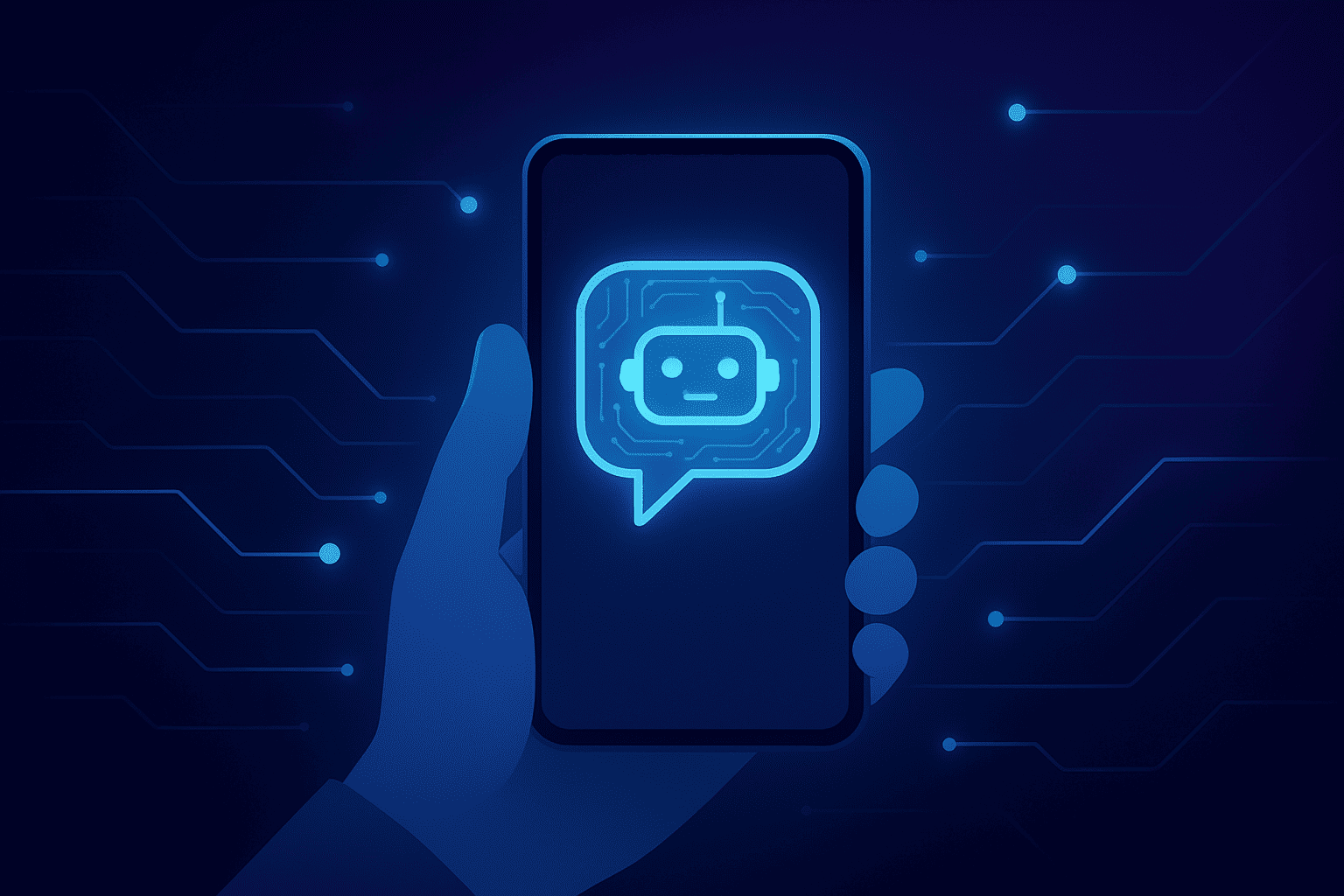In today’s fast-paced digital world, instant communication and efficient service are paramount. Enter AI Chatbots the intelligent conversational agents that are redefining how businesses interact with customers and how individuals access information.
From resolving customer queries 24/7 to generating creative content, AI Chatbots are transforming our digital experiences.
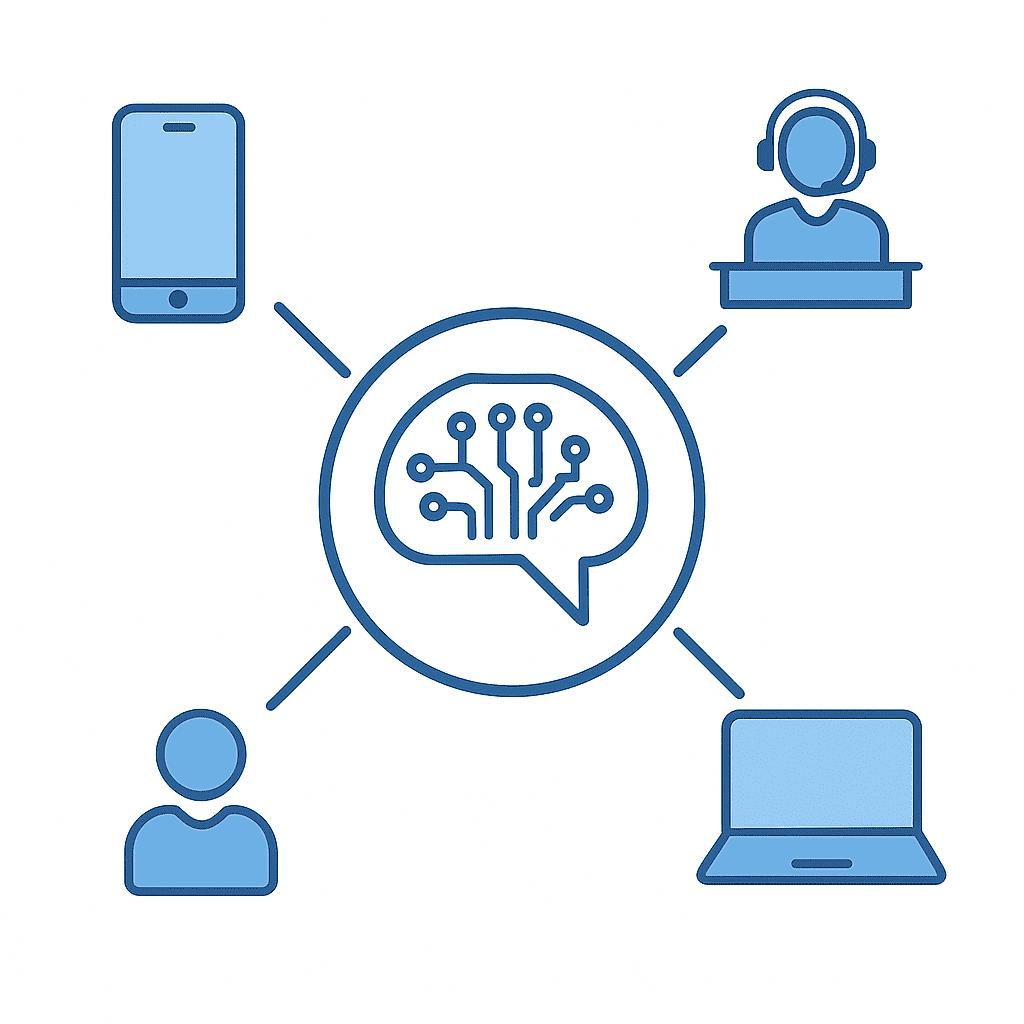
But what are AI Chatbots at their core, and how do they manage to understand and respond to human language with such astonishing fluency? This definitive guide will demystify these powerful tools.
We’ll explore the underlying AI technologies that power them, uncover the immense benefits they offer to businesses, examine popular examples, and discuss their exciting future.
Section 1: Demystifying AI Chatbots – The Core Concept
To fully grasp their impact, we must first define what AI Chatbots are and how they operate.
What are AI Chatbots?
AI Chatbots are computer programs designed to simulate human conversation through text or voice interfaces.
Unlike traditional rule-based chatbots that follow predefined scripts, AI Chatbots use Artificial Intelligence (AI) to understand natural language, learn from interactions, and provide more dynamic and human-like responses.
They are essentially intelligent conversational agents capable of comprehending user intent and generating relevant replies.
The Underlying Intelligence: NLP, NLU, and NLG
The “AI” in AI Chatbots comes from several interconnected fields of Artificial Intelligence:
- Natural Language Processing (NLP): The overarching field that enables computers to understand, interpret, and generate human language.
- Natural Language Understanding (NLU): A subset of NLP, NLU focuses on interpreting the meaning, intent, and sentiment behind human language. It helps the chatbot understand what you mean, even if your phrasing is imperfect.
- Natural Language Generation (NLG): Another subset of NLP, NLG focuses on converting structured data into human-like text. It’s how the chatbot crafts its articulate responses.
Combined, these technologies allow AI Chatbots to bridge the gap between human language and computer processing.
The Role of Large Language Models (LLMs)
Modern AI Chatbots have been supercharged by the advent of Large Language Models (LLMs) like OpenAI’s GPT series (used in ChatGPT) and Google’s Gemini.
LLMs provide AI Chatbots with an unprecedented ability to:
- Generate highly coherent, contextually relevant, and creatively diverse text.
- Understand complex, nuanced prompts and engage in extended conversations.
- Perform tasks like summarization, translation, and information synthesis on the fly.
This has moved chatbots beyond simple query responses to becoming powerful conversational assistants.
Section 2: How AI Chatbots Work – A Step-by-Step Interaction
Understanding the mechanics of an AI Chatbot interaction reveals the sophisticated processing happening behind a seemingly simple conversation.
The Chatbot Interaction Cycle
Every conversation with an AI Chatbot follows a typical flow, driven by its underlying AI:
- User Input: The user types or speaks a query (e.g., “I need help with my account”).
- Intent Recognition (NLU): The chatbot uses NLU to analyze the input, identifying the user’s intent (e.g., “account assistance”) and extracting key entities (e.g., “account number,” “password”).
- Context Management: The chatbot maintains a memory of the conversation, using previous turns to inform future responses and ensure continuity.
- Response Generation (NLG): Based on the recognized intent and context, the chatbot generates an appropriate response. This could involve retrieving information from a database, performing an action, or using an LLM to generate a custom answer.
- Output to User: The generated response is delivered to the user via text or synthesized speech.
This cycle repeats, allowing for dynamic and intelligent conversational threads.
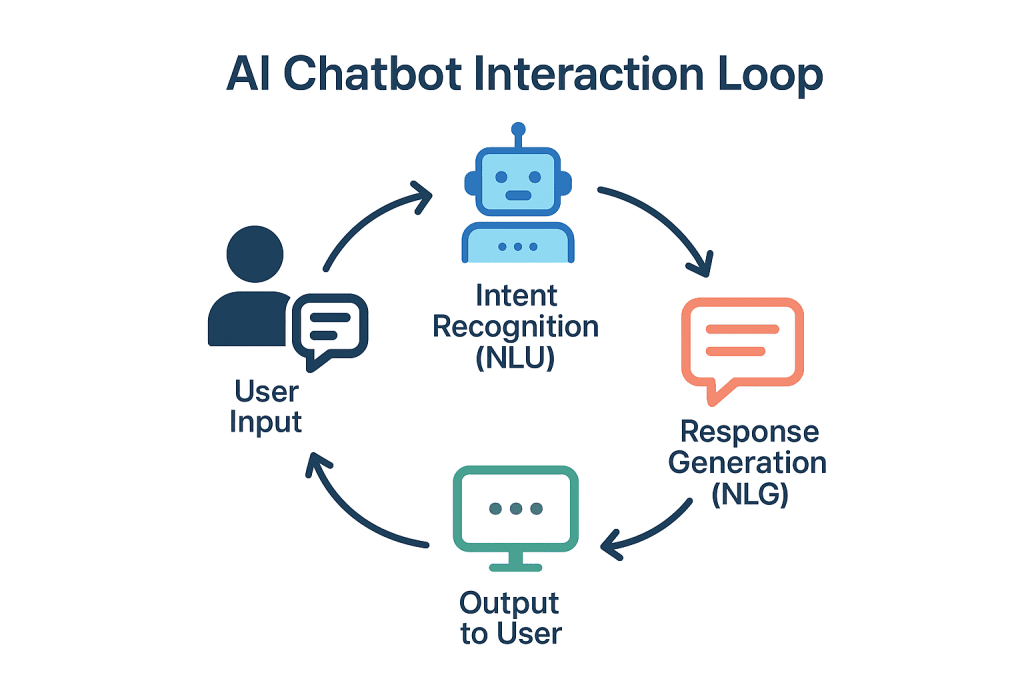
Section 3: Benefits of AI Chatbots for Businesses
The adoption of AI Chatbots for businesses is no longer a trend; it’s a strategic imperative.
They offer a multitude of advantages that impact efficiency, customer satisfaction, and revenue.
What are the benefits of AI Chatbots?
The benefits of deploying AI Chatbots are significant and far-reaching:
- 24/7 Availability and Instant Support: Chatbots never sleep. They provide immediate assistance around the clock, improving customer experience by reducing wait times and allowing users to get help whenever they need it.
- Cost Reduction: By automating responses to frequently asked questions (FAQs) and handling routine queries, chatbots significantly reduce the workload on human customer service agents, lowering operational costs.
- Improved Customer Satisfaction: Quick, accurate, and consistent responses lead to happier customers. Chatbots can efficiently guide users to information or resolve issues without frustration.
- Scalability: Chatbots can handle thousands of simultaneous conversations without any degradation in performance, allowing businesses to scale their support operations during peak times without increasing headcount.
- Data Collection and Insights: Every interaction provides valuable data about customer queries, pain points, and preferences. This data can be analyzed to improve products, services, and the chatbot itself.
- Lead Generation and Qualification: Chatbots can engage website visitors, answer preliminary questions, qualify leads based on predefined criteria, and seamlessly hand off high-value leads to sales teams.
- Personalization: Modern AI chatbots can remember past interactions and user preferences, providing more tailored and relevant assistance over time.
These benefits demonstrate why AI Chatbots for businesses are becoming indispensable tools for modern enterprises.
Section 4: Most Popular AI Chatbots and Platforms
The landscape of AI Chatbots is vibrant, with many powerful options available for both individuals and businesses.
Most Popular AI Chatbots for General Use
For individuals and general inquiry, certain AI Chatbots have gained immense popularity:
- ChatGPT (OpenAI): Built on the GPT series of Large Language Models, ChatGPT revolutionized public perception of AI’s conversational abilities. It excels at text generation, summarization, brainstorming, and creative writing.
- Google Bard / Gemini (Google): Google’s direct competitor, also powered by their advanced LLMs (Gemini). It offers similar conversational capabilities, often with real-time web access and integration with other Google services.
- Microsoft Copilot: Integrated across Microsoft 365 applications, Copilot acts as an AI assistant for productivity tasks, generating content in Word, analyzing data in Excel, and creating presentations in PowerPoint.
These chatbots demonstrate the cutting-edge capabilities of LLM-powered conversational AI.
AI Chatbots for Businesses: Platforms and Solutions
For businesses, the choice of AI Chatbots often involves platforms that allow for customization, integration, and scalability:
- IBM Watson Assistant: A robust platform offering advanced NLP capabilities, deep integration options, and tools for building sophisticated virtual assistants for enterprise use cases.
- Google Dialogflow: Provides tools for building conversational interfaces across various platforms, leveraging Google’s AI technologies for NLU and NLP.
- Amazon Lex: The same conversational AI technology that powers Alexa, enabling developers to build powerful chatbots into their applications.
- Custom LLM-based Solutions: Many businesses are now leveraging open-source LLMs (like Meta’s Llama 2) or fine-tuning proprietary models to build highly specialized chatbots tailored to their specific data and needs.
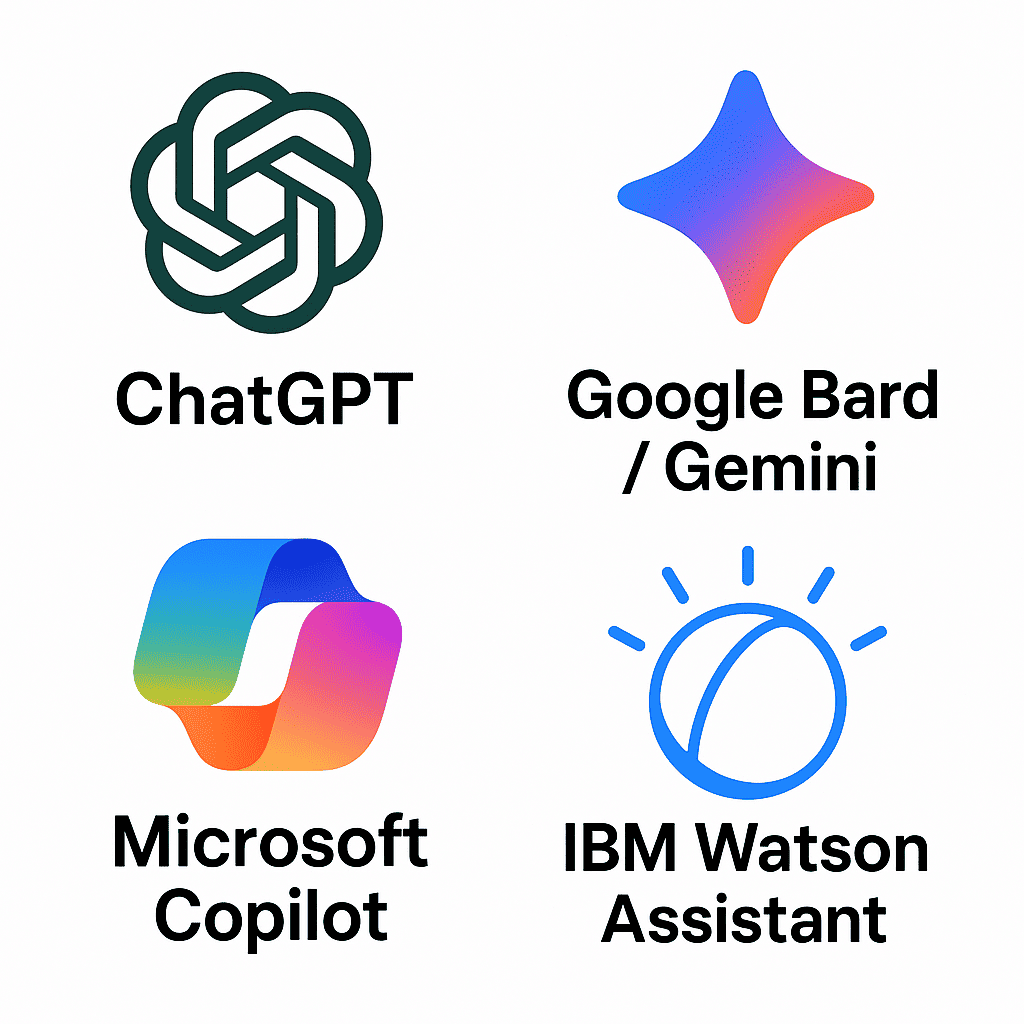
Section 5: Challenges and The Future of AI Chatbots
Despite their remarkable capabilities, AI Chatbots face challenges, but the future promises even more sophisticated and integrated conversational experiences.
Challenges in AI Chatbot Deployment
While the benefits are clear, deploying AI Chatbots for businesses comes with its own set of hurdles:
- Maintaining Human-like Conversation: Despite advancements, chatbots can still struggle with complex nuanced questions, empathy, or understanding sarcasm, leading to frustration.
- Data Privacy and Security: Chatbots often handle sensitive customer data, requiring robust security measures and strict adherence to privacy regulations (e.g., GDPR, CCPA).
- Integration Complexity: Integrating a chatbot seamlessly with existing CRM systems, databases, and other business tools can be technically challenging.
- Bias in Responses: If trained on biased data, chatbots can inadvertently generate responses that reflect harmful stereotypes or misinformation.
- “Hallucinations” (for LLM-based bots): LLM-powered chatbots can sometimes generate plausible-sounding but factually incorrect information, requiring careful oversight.
The Future of AI Chatbots
The evolution of AI Chatbots is set to continue at a rapid pace:
- Multimodal Interaction: Chatbots will increasingly integrate text, voice, image, and even video for richer, more natural conversations.
- Proactive and Context-Aware Assistance: Chatbots will anticipate user needs and offer help before being asked, based on context and predictive analytics.
- Emotional Intelligence: Advances in sentiment analysis and emotional AI will allow chatbots to better detect and respond to human emotions, leading to more empathetic interactions.
- Personalized Learning and Adaptation: Chatbots will continuously learn and adapt to individual users, offering highly personalized assistance over extended periods.
- Autonomous Agents: Future chatbots will act as intelligent agents, capable of planning, executing, and monitoring complex tasks across multiple applications without constant human intervention.
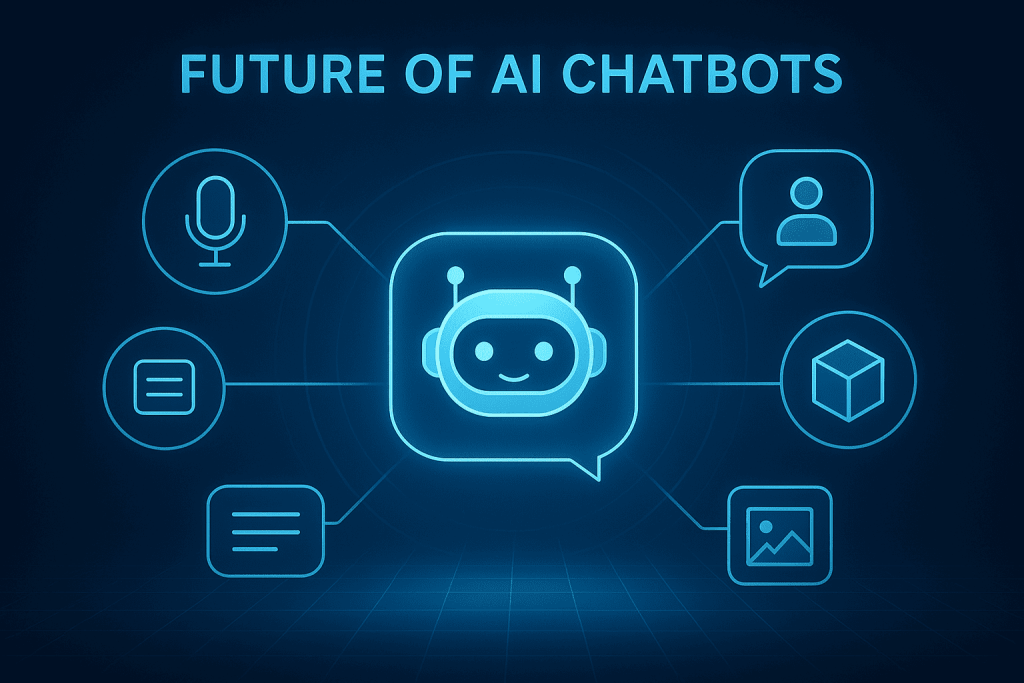
Conclusion
AI Chatbots are no longer a novelty; they are indispensable tools transforming customer service, information access, and productivity across every industry.
By understanding what are AI Chatbots, how their underlying NLP and LLM technologies function, and the profound benefits they offer, you gain insight into a pivotal aspect of modern AI.
For businesses, deploying AI Chatbots means enhanced efficiency, improved customer experiences, and actionable data insights.
As the technology continues to evolve towards more multimodal, emotionally intelligent, and autonomous capabilities, AI Chatbots will remain at the forefront of the conversational AI revolution.

